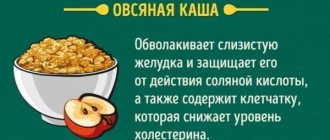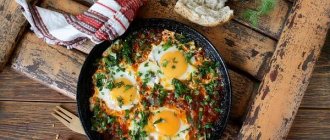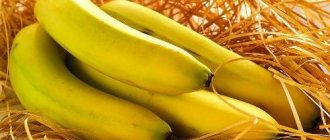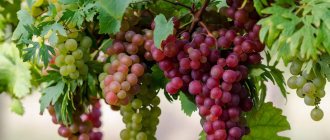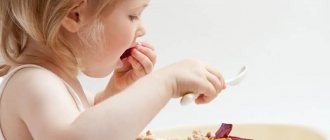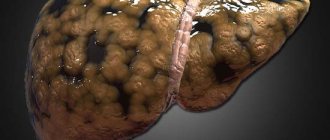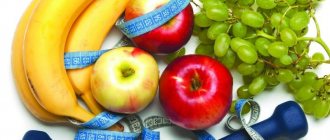Increased acidity in the stomach is accompanied by symptoms such as burning, bad taste in the mouth, heartburn and bloating. Such consequences can occur due to poor nutrition, frequent nervous stress, bad habits, or long-term use of certain medications. This manifestation can also be caused by bacteria that have entered the stomach. A diet for high stomach acidity is a mandatory prescription when performing treatment.
Briefly about the diet
The cause of digestive problems sometimes remains a mystery to us. We don’t even suspect about them until obvious symptoms appear that change the quality of our life. Risk factors for high acidity:
- rare or irregular meals
- snacking on inappropriate foods
- excessive eating (large portions)
- food on the go
- fast food (McDonald's, etc.)
- semi-finished products
Strong, rich broths (even mushroom broths) are contraindicated in the diet for people with high acidity. Although some would-be experts recommend “hot stuff.” If the condition has worsened (symptoms have worsened), replace pickles and borscht with cream soups and soups with a mucous structure, for the preparation of which you take cereals such as rice or oatmeal.
For cooking, choose vegetables with minimal fiber content:
- carrot
- potato
- pumpkin
The following vegetables are not recommended:
- sorrel
- radish
- white cabbage
- radish
- ginger
Fruits with high acidity are acceptable, but they should be more sweet than sour. If symptoms worsen, you should not eat raw fruits; they are baked or boiled; there are even recipes on the Internet for fruit soups that are suitable for people with high acidity. You can puree the fruit or make a soufflé out of it.
It is possible to include meat in a diet with high acidity, but not fatty varieties. Meat can be prepared in the following ways:
- steaming (or in a double boiler)
- extinguishing
- boiling
In no case should you eat fatty meat if you have problems with acidity (for example, fatty parts of pork and rabbit). You cannot use a method of processing meat such as frying. Fatty foods are harmful because such food remains in the gastrointestinal tract for a long time, which can worsen the condition of a person with high acidity. We also get fat from oil (sunflower and butter), mayonnaise, various nuts, cream, peanut butter, potato chips, etc.
Cooking
When preparing the menu, you can add various dishes to it, slightly adjusting the recipes used, and as a result remove from them foods that are dangerous to the stomach. For example, you can use recipes already approved by nutritionists.
Note! Recipes for patients with gastritis should be gentle, taking into account all the features of the disease.
Steamed cutlets
Recipe of dish.
- Veal -1 kg.
- White bread - 200 gr.
- Milk - 100 ml.
- Onion - 2 pcs.
- Water - 100 ml.
- Butter.
- Egg - 3 pcs.
- Salt.
Interesting! How to reduce stomach acidity - signs and how to treat
Cooking stages.
- Wash and clean the meat.
- Grind in a meat grinder 2 times.
- Soak the bread in milk, chop the onion.
- Mix everything with meat.
- Beat 50 gr. butter with eggs until foamy and add to minced meat.
- Add salt and water to make the dish juicy.
- Form cutlets and place in a steamer for 40 minutes.
- To ensure even cooking, turn the cutlets every 10 minutes.
Diet principles
Among the principles of the diet are the use of cereals and cereal side dishes. They can be cooked with milk and water. If the symptoms have worsened, during this period it is better to eat porridge with a thinner consistency; they are easier to digest. Doctors recommend fermented milk products and fresh milk for high acidity, for example cottage cheese. You can eat eggs.
As for drinks, the following are acceptable:
- drinking water (filtered or purchased)
- jelly
- compotes
- tea (not very strong)
- still mineral alkaline water

It is important to eat small portions and often, this is called fractional meals. Eating every two or three hours is acceptable. Food should not be washed down (this also applies to tea with desserts after the main meal). You can drink a glass of liquid 30 minutes before meals, or drink it 1-2 hours after meals.
What are the consequences of non-compliance with diet and nutrition rules in case of stomach inflammation?
Chronic inflammation of the stomach is a condition that requires close attention of the doctor and the patient. Medical nutrition is one of the main factors in recovery. Products that help with gastritis reduce the aggressive effects of hydrochloric acid on the mucous membrane, promote epithelial regeneration, and improve digestion processes.
Regular diet violations lead to adverse consequences that affect a person’s quality of life. If you do not follow nutritional advice, you may encounter the following complications:
- the formation of atrophy of the mucous membrane - atrophic gastritis;
- the appearance of ulcerative defects of the upper digestive tract;
- malignancy of the stomach;
- spread of the pathological process beyond the organ with the development of pancreatitis, cholecystitis, esophagitis, reflux disease;
- problems with bowel movements - diarrhea and constipation;
- risk of autoimmune pathology.
Menu for high acidity
A diet with high acidity allows the consumption of baked goods:
- bread dried in a microwave or toaster (preferably not white)
- crackers
- cracker or biscuit cookies
- pasta and vermicelli (without sauces)
You can eat fresh or frozen cooked vegetables. They are steamed, mashed, boiled or stewed. Frying is prohibited.
What products can
Acceptable fruits:
- pear
- bananas
- avocado (be careful with the quantity, avocado contains a large amount of fat)
- peeled apple
Cereals with high acidity:
- oatmeal
- rice
- barley grits
- buckwheat
- semolina
- couscous
Sea fish is acceptable (it is better to avoid eating river fish); it is steamed, boiled, or baked in foil. You can have 3 to 4 eggs per week if you have high acidity. They are boiled or steamed into an omelet.
Preferably this meat:
- turkey
- chicken fillet
- veal
- rabbit meat (lean)
Desserts with high acidity:
- fruit mousses
- jelly
- marmalade
- souffle
- paste
- marshmallows
- honey
- preserves and jams (non-sour)
- cracker
What should you not eat?
If you have a sick stomach, you should exclude from your diet:
- Heavy fatty foods, which complicate the digestion process and are difficult for the body to absorb. Fatty foods can be tough for someone suffering from acidity. While fried foods may look crispy, they are high in fat. Foods high in fat require more time to digest and therefore more acid.
- You should not eat spicy foods with a lot of spices, which have an aggressive effect on the walls of the stomach.
- Thick, rich broths are difficult to digest.
- The mushroom menu contains acids that destroy the gastric mucosa.
- Acidic vegetables and fruits (tomatoes, lemons, tangerines, grapefruits), the juice of which contains an excess amount of acid and contributes to corroding the walls of the stomach.
- Although tomatoes are incredibly healthy vegetables, they contain high amounts of acid. This can erode the stomach lining, causing acidity.
- It is not recommended to eat watermelon. This summer fruit is not so much harmful in itself as the juice it contains, which leads to an increase in the acidity of gastric juice.
- Carbonated drinks. They are known to cause a number of diseases such as obesity, but carbonated drinks are one of the main causes of acidity. Carbonated drinks release tiny bubbles in your stomach when you drink them. This, in turn, exerts pressure, increases the level of acidity in the stomach and provokes further deterioration of the condition.
- Alcohol, of course, is strictly prohibited during the diet. The ethanol contained in it leads to dehydration of the body, causing increased concentrations of stomach acids.
- Sweet confectionery and fresh baked goods are foods that are difficult for the body to digest.
- Fatty meat overloads the stomach.
- Chocolate, desserts with icing and nuts, and ice cream also have an aggressive effect on the gastric mucosa.
- Cheese products.
Approximate diet:
- During the diet, you need to eat 5-6 times a day with food at room temperature, prepared, if possible, in the form of puree or soufflé. Salt must be excluded from the diet. Before going to bed, you should drink a glass of warm milk.
- Eat cereal-based soups with an egg-milk mixture. In this case, cereals must be ground to increase their digestibility.
- The consumption of dairy products is not prohibited, except for cheese, kefir and sour cream. Eggs must be soft-cooked.
- You can eat honey and sugar, tea with cream and milk, fruit jelly.
- Drink plenty of water every day to flush out toxins from your body. Water helps in detoxifying the body and reduces acidity.
- Banana is an effective remedy against acidity. People suffering from acidity should eat at least one banana every day to get rid of acidity and its associated symptoms.
- Cold or warm milk helps balance the acidity levels in the stomach. Drink a glass of milk every day before going to bed.
- Almonds are useful in treating chronic acidity. You can puree the almonds in a blender to turn them into flour. Consume half a teaspoon of this powder every day with water to prevent acidity and hyperacidity.
- The meat should be lean, baked or boiled, prepared in the form of souffles, cutlets and meatballs.
Foods that increase acidity
If you have high stomach acidity, it is better to avoid foods and dishes that will increase it even more. This includes the following bakery products:
- buns
- fresh baked goods made from premium wheat flour
- pies (especially fried ones)
- puff pastry and all products made from it
- pizza
- chebureks and khachapuri
- pastries and cakes
The following foods irritate the gastric mucosa:
- corn
- nuts and seeds
- snacks and chips
- crackers with salt
- convenience foods and fast food
- smoked meats (smoked cheese, for example)
- fast food
Prohibited for high acidity:
- salo
- red meat
- animal by-products (eg kidneys)
- sausages and sausages
- sour fruits
- juices based on sour fruits
- oil creams
- chocolate
- desserts containing nuts that are coated with glaze
- sweets with preservatives and synthetic colors
- ice cream
It is undesirable to consume such products if you have high stomach acidity:
- sauces
- herbs and spices
- broths and gravies
- marinades
- adjika
- mayonnaise and ketchup
- alcoholic drinks (you also need to stop smoking)
- energy
- any carbonated drinks
- cocoa and coffee
- hot chocolate
- pickles
The diet must be strictly adhered to while symptoms worsen. Small retreats are possible when a person feels lighter.
Useful tips: how to reduce stomach acidity
For a stable reduction in the concentration of hydrochloric acid and normal functioning of the stomach, it is important to follow dietary recommendations that will help reduce the load on the digestive system. There are simple folk methods that can quite effectively reduce the acidity of gastric juice:
- Take a spoonful of freshly squeezed potato juice once a day, preferably in the morning.
- A hygienic and health procedure for the stomach, which helps normalize its acidity, is to drink a glass of cool water in the morning immediately after sleep; this will improve blood circulation in its walls and prepare the mucous membrane for food intake.
- Banana has enveloping properties for the gastric mucosa; it is useful to eat it in the morning before breakfast.
- Instant coffee increases the acidity of the stomach to a greater extent, so it is better to give preference to brewed coffee or black tea.
- Nicotine significantly affects the acidity of the stomach, so it is better to give up this addiction. After quitting smoking, a “withdrawal syndrome” may develop during the first few weeks, in which the acidity of the stomach may increase, then it will normalize.
- The damaging effects of elevated levels of hydrochloric acid are more pronounced on an empty stomach, so it is important to take food at least 5 times a day, but in small portions.
Today, there are a large number of different antacid medications on the pharmacological market. But their therapeutic effectiveness will remain low without following dietary recommendations.
Menu for high acidity
First day
For tomorrow, make steamed cheesecakes with sour cream. Drink: tea with milk. Yoghurt is suitable as a snack, preferably homemade. For lunch, oatmeal soup, steamed meatballs, carrot puree and non-sour compote are suitable. As an afternoon snack - tea with biscuits. The best dinner option: steamed fish, pasta and jelly.
Second day
Breakfast includes oatmeal with honey and herbal tea. As a snack, you can give the patient milk with a cracker (it is better to make crackers at home to avoid strange impurities). Lunch menu: creamy zucchini soup, vegetable stew, green tea. For an afternoon snack, you can eat a banana or half an avocado. For dinner, dumplings are served with potatoes (minimal oil) and compote.
The third day
For breakfast, boil an egg (or several), give dried bread with cheese; drink: compote. You can bake an apple for a snack. For lunch they give milk soup, steamed chicken and tea. An excellent option for an afternoon snack would be a glass of kefir and a couple of biscuits. For dinner you can have rice casserole, boiled or stewed vegetables and jelly.
Fourth day
An excellent breakfast option is a steamed omelette and tea with milk. For a snack, you can give the patient jelly with cookies (the composition should contain a minimum of fat and fiber). For lunch, they serve rice-based soup, boiled veal, vegetables (boiled or steamed) and non-acidic compote. For an afternoon snack you can have a pear. For dinner, boiled potatoes with vegetables and rosehip tea are suitable.
Fifth day
Prepare cottage cheese casserole for breakfast in a double boiler or oven. Herbal tea is also served. A glass of milk and cookies or a sweet cracker will do as a snack. For lunch they provide barley soup, chicken meatballs with a side dish of rice, and carrot juice. For an afternoon snack, bake a sour apple. For dinner they serve pasta with cottage cheese; drink: jelly.
Sixth day
For breakfast, you can give the patient cottage cheese with sour cream and compote. After some time, you can have a snack with tea with soufflé or marshmallows. For lunch, onion soup and steamed fish ball are suitable. Drink for lunch: tea. Apple jelly is served for afternoon tea. Possible dinner: potato casserole with sour cream, jelly.
Seventh day
For breakfast, if you have high acidity, you can have semolina pudding with jam and tea with cream (minimum fat content, 10% possible). As a snack, you can give cookies and yogurt or sourdough. Sample lunch: creamy cauliflower soup, sea fish cooked in foil with herbs, compote. An afternoon snack could be something like this: cottage cheese with jam. For dinner on the seventh day, you can serve rice cutlets with a vegetable side dish and jelly.
Half an hour before bedtime, you can drink 150-200 ml of milk, kefir or yogurt. Based on the acceptable products listed above, you can prepare all new dishes. Nutrition can and should be varied.
Salad Recipes
There are many salads that can be included in the menu for people with high acidity levels.
For the corn salad you will need:
- corn - a quarter of a can;
- water - a quarter glass;
- bell pepper – half a vegetable (cut into strips);
- celery – 160 g (cut into cubes);
- parsley – 1 tbsp. l. finely chopped greens;
- linseed oil – 2.5 tbsp. l.;
- apple cider vinegar – 1 tsp.
You need to combine all the ingredients and mix thoroughly.
There are many recipes made from beets. For example, you can use the following mixes:
- beets, boiled carrots;
- beets, fresh sweet apple and chopped nuts;
- beets, dried apricots and prunes;
- beets, low-fat cheese, sweet pear.
The following fruit options are suitable for reducing stomach acidity:
- prunes, walnuts and dried apricots;
- pear, banana, peach, sweet apple;
- walnut, banana and oatmeal;
- prunes, almonds, sweet baked apple;
- raspberries, strawberries, canned peaches and pineapple;
- boiled rice, baked pumpkin and sweet apple.
Use the quantity of ingredients at your own discretion. You can season salads with a small amount of vegetable oil or low-fat sour cream.
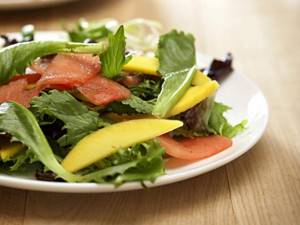
You can also mix cottage cheese with honey and dried cranberries. They also use raisins instead. A good option is cottage cheese, prunes, nuts and sour cream. A mixture of cottage cheese, dill, parsley, sour cream and Chinese cabbage is also prepared.
Categorical prohibition
With any type of stomach inflammation, some dishes must be excluded from the diet forever. These are foods that cause gastritis.

Their use can lead to irreversible consequences. The list is presented:
- Alcoholic drinks, given their leading role in the occurrence of pathology.
- Spicy seasonings that irritate the mucous membranes, cause heartburn and belching, aggravating inflammation.
- Semi-finished products - containing artificial additives and flavor enhancers, such as monosodium glutamate, which cause irritation of the gastric epithelium.
- Carbonated drinks, especially colored ones, have a negative effect on the production of hydrochloric acid.
Attention!
Regular consumption of harmful foods increases the risk of developing stomach inflammation, causing irreversible changes in the mucous membrane of the organ, ulcers and atrophy of the epithelium.
